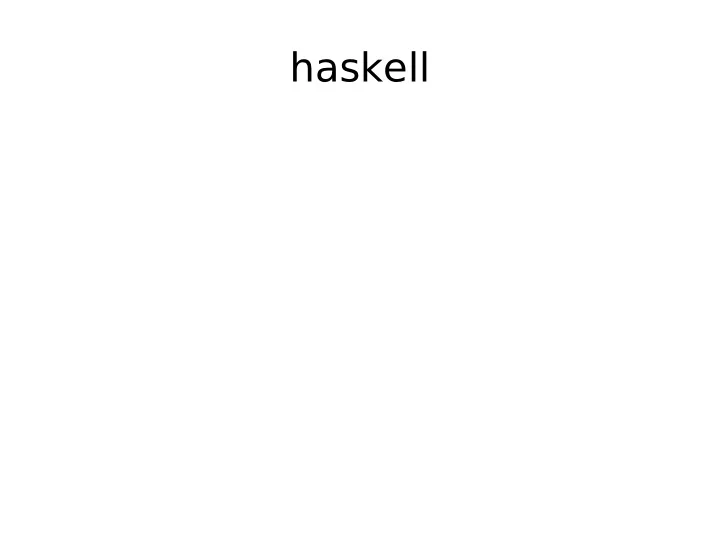

haskell
cons In haskell consing is done via the infix operator (:). For example: (cons 1 (cons 2 (cons 3 null))) is the same as 1:2:3:[] in haskell
types ● Haskell has types! Love the typechecker ● Some of these types you are familiar with, for example: ● Integer ● Double ● Char ● Bool ● and their associated list types like [Bool]
More types ● Haskell also supports polymorphism ● For example the identity function looks like id :: a → a id x = x ● Polymorphic types have type variables, in the above example 'a' is the type variable. ● When writing down your own types you can use whatever character sequence you want as type variables
Arrow types ● Haskell also has types you are potentially unfamiliar with ● For example: Integer → String → Bool is a type
associativity ● Racket has no syntax ● We needed to write our programs as an abstract syntax tree ● This was good because there was no ambiguity about how things associate ● It was bad because we had to get used to reading parentheses-encrusted code))])))))]))
What is associativity? ● Associativity is the order in which things execute in the absence of parentheses ● Parentheses make it clear how things associate ● Left associativity is when we execute statements left-to- right, for example if ~ is a binary operator, then 1 ~ 2 ~ 3 ~ 4 ~ 5 Is computed in the order ((((1 ~ 2) ~ 3) ~ 4) ~ 5)
What is associativity? ● Right associativity the same as left associativity except from right-to-left. So the previous example would be computed as (1 ~ (2 ~ (3 ~ (4 ~ 5))))
Arrow types associativity ● It is important to remember that in haskell arrow types are right associative ● The arrow type t1 → t2 → t3 → t4 → t5 is implicitly parenthesized like (t1 → (t2 → (t3 → (t4 → t5)))) ● However the type checker will remove parentheses when they are not required to enforce correct precedence
Recommend
More recommend